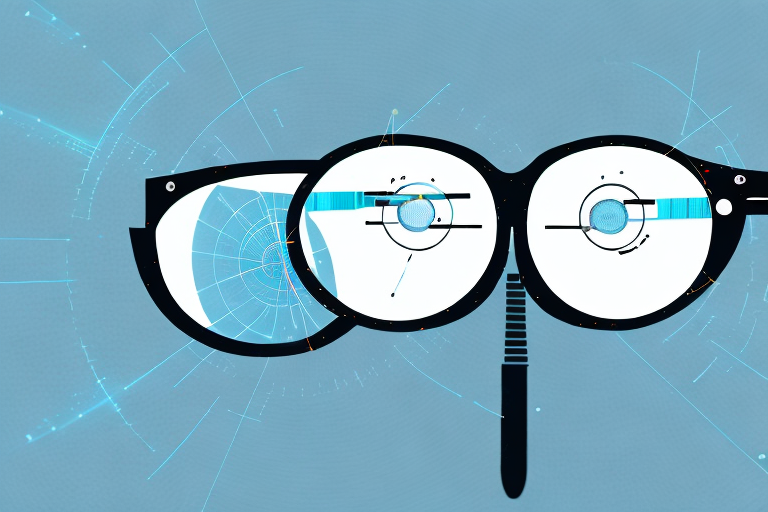As we age, our eyes undergo various changes, and one common condition that affects many individuals is presbyopia. This article aims to provide a comprehensive guide to laser eye surgery for presbyopia, focusing on understanding the condition, the basics of laser eye surgery, the procedure itself, and how to prepare for it.
Understanding Presbyopia
Presbyopia is a natural age-related vision condition that affects the ability to focus on near objects. It occurs due to the hardening of the lens and a decrease in its flexibility. This leads to difficulties in activities such as reading, using a smartphone, or seeing objects up close.
As we age, our bodies undergo various changes, and our eyes are no exception. The lens of the eye, which is responsible for focusing light onto the retina, gradually loses its elasticity. This loss of elasticity makes it more difficult for the lens to change shape and adjust its focus, resulting in presbyopia.
The Science Behind Presbyopia
To comprehend presbyopia, it’s essential to understand the underlying scientific principles. The eye’s lens, made of proteins and water, becomes less elastic over time. This results in a reduced ability to change shape, preventing the eye from properly focusing on close objects.
The hardening of the lens is caused by the gradual accumulation of proteins and other substances within its structure. These changes alter the lens’s refractive properties, making it less capable of bending light rays to form a clear image on the retina. As a result, near objects appear blurry, and individuals with presbyopia may find themselves straining their eyes or holding reading materials at arm’s length to see clearly.
Furthermore, the loss of flexibility in the lens affects its ability to accommodate, which is the process of adjusting the lens’s shape to focus on objects at different distances. Accommodation is crucial for clear vision, as it allows the eye to switch between near and far vision effortlessly. However, with presbyopia, the lens becomes less responsive to the muscles that control its shape, making it increasingly challenging to focus on close objects.
Symptoms and Diagnosis of Presbyopia
The common symptoms of presbyopia include blurred vision at a close distance, eye strain, and the need to hold reading materials at arm’s length. If you experience these symptoms, it’s crucial to undergo an eye examination with an optometrist or ophthalmologist for a proper diagnosis.
During an eye examination, the eye care professional will perform various tests to assess your visual acuity and determine the extent of your presbyopia. These tests may include a visual acuity test, where you read letters on a chart at different distances, and a refraction test, which measures the eye’s ability to focus light. Additionally, the eye care professional may use a device called a phoropter to determine the most suitable prescription for corrective lenses, such as reading glasses or multifocal lenses.
It’s important to note that presbyopia is a natural part of the aging process and affects nearly everyone to some degree. While it cannot be prevented or cured, there are several treatment options available to manage its symptoms and improve near vision. These options include wearing corrective lenses, such as reading glasses or contact lenses, undergoing refractive surgery, or using intraocular lenses.
By understanding the science behind presbyopia and recognizing its symptoms, individuals can seek appropriate vision care and make informed decisions about managing their near vision as they age.
Overview of Laser Eye Surgery
The best Laser eye surgery has revolutionized vision correction procedures, offering a safe and effective solution for various refractive errors. The surgery utilizes advanced laser technology to reshape the cornea, improving the eye’s ability to focus and reducing or eliminating the need for glasses or contact lenses.
Imagine waking up in the morning and being able to see the world clearly without reaching for your glasses or putting in your contact lenses. Laser eye surgery has made this a reality for millions of people around the world. By reshaping the cornea, the surgery corrects refractive errors such as nearsightedness, farsightedness, and astigmatism, allowing individuals to enjoy clear vision without the aid of visual aids.

But how does laser eye surgery work? Let’s delve into the basics of this remarkable procedure.
The Basics of Laser Eye Surgery
Laser eye surgery involves using a specialized laser to precisely reshape the cornea. The two most commonly performed procedures are LASIK (Laser-Assisted In Situ Keratomileusis) and SMILE (Small Incision Lenticule Extraction). Both procedures aim to correct refractive errors and improve vision.
During LASIK, a thin flap is created on the cornea using a microkeratome or a femtosecond laser. The flap is then lifted, and the underlying corneal tissue is reshaped using an excimer laser. Once the cornea is reshaped, the flap is repositioned, acting as a natural bandage.
On the other hand, SMILE is a minimally invasive procedure that involves creating a small incision in the cornea to access and remove a lenticule, which is a small piece of tissue causing the refractive error. This procedure requires no flap creation, making it a popular choice for individuals with thin corneas.
Both LASIK and SMILE offer quick recovery times and high success rates, making them preferred options for laser eye surgery.
Different Types of Laser Eye Surgery
There are several laser eye surgery options available, including LASIK, SMILE, PRK (Photo-Refractive Keratectomy), and LASEK (Laser-Assisted Sub-Epithelial Keratomileusis). Each procedure has its advantages and considerations, and the choice depends on factors such as corneal thickness, prescription, and personal preferences.
PRK is an alternative to LASIK and involves removing the thin outer layer of the cornea, known as the epithelium, before reshaping the cornea with an excimer laser. This procedure is suitable for individuals with thin corneas or those who may not be suitable candidates for LASIK.
LASEK combines elements of both LASIK and PRK. It involves creating a flap similar to LASIK but with a thinner layer of corneal tissue. The flap is then lifted, and the cornea is reshaped using an excimer laser. This procedure is often recommended for individuals with thin corneas or those at a higher risk of complications.
Choosing the right type of laser eye surgery is crucial for achieving optimal results. It is important to consult with a qualified ophthalmologist who can assess your specific needs and recommend the most suitable procedure. You can aslo read about Possible cataracts surgery risks and complications by visiting https://nwmedicalhypnosis.com/possible-cataracts-surgery-risks-and-complications/
Overall, laser eye surgery offers a life-changing solution for individuals seeking freedom from glasses or contact lenses. With advancements in technology and surgical techniques, more people can experience the joy of clear vision and improved quality of life.
Laser Eye Surgery for Presbyopia
Presbyopia, the age-related loss of near vision, has long been a challenge for individuals as they enter their 40s and beyond. While laser eye surgery has been primarily used to correct nearsightedness, farsightedness, and astigmatism, advancements in technology have paved the way for its usage in treating presbyopia as well.
Presbyopia occurs when the natural lens of the eye loses its flexibility, making it difficult to focus on close objects. This condition affects millions of people worldwide, leading to the need for reading glasses or bifocals. However, laser eye surgery offers a potential solution to this common problem.
How It Works
Laser eye surgery for presbyopia typically involves different techniques to improve near vision. These techniques may include creating a multifocal cornea or implanting multifocal or accommodative intraocular lenses.
One technique, known as monovision, involves correcting one eye for distance vision and the other for near vision. This allows the brain to adapt and merge the images from both eyes, providing a clear and balanced view of objects at various distances.
Another technique, called corneal inlays, involves inserting a small device into the cornea to improve near vision. These inlays can be made of various materials, such as hydrogel or synthetic polymers, and are designed to reshape the cornea, allowing for better focusing ability.
Benefits and Risks
The benefits of laser eye surgery for presbyopia are numerous. Patients often experience reduced dependence on reading glasses or bifocals, improved overall vision, and enhanced quality of life. Being able to see clearly without the constant need for corrective eyewear can greatly improve daily activities, such as reading, working on a computer, or enjoying hobbies.
However, like any surgical procedure, laser eye surgery for presbyopia does come with potential risks and complications. It’s important to discuss these with your surgeon before deciding to proceed with the surgery. Some common risks include dry eyes, glare or halos around lights, fluctuating vision, and the need for additional enhancements or touch-up procedures.
Additionally, not everyone is a suitable candidate for laser eye surgery for presbyopia. Factors such as the severity of presbyopia, overall eye health, and any existing eye conditions may affect the success and outcome of the procedure. A comprehensive evaluation by an experienced eye surgeon is necessary to determine if laser eye surgery is the right option for you.
In conclusion, laser eye surgery for presbyopia offers hope to those struggling with the loss of near vision. With advancements in technology and various surgical techniques, individuals can potentially regain their ability to see clearly at all distances, reducing the need for reading glasses or bifocals. However, it’s crucial to thoroughly discuss the benefits, risks, and suitability of the procedure with a qualified eye surgeon before making a decision. By clicking here you can read about Types of Eye Surgery for Refractive Errors.
Preparing for Laser Eye Surgery
Proper preparation is essential to ensure a successful outcome and a smooth recovery from laser eye surgery for presbyopia.
Initial Consultation and Evaluation
Your journey towards laser eye surgery begins with an initial consultation and a thorough evaluation of your eye health and visual needs. During this visit, your surgeon will assess your suitability for the procedure and address any questions or concerns you might have.
What to Expect Before Surgery
Prior to the surgery, you may need to undergo certain pre-operative procedures, such as refractive tests, corneal mapping, and measurements of your eye’s internal structures. Your surgeon will provide detailed instructions on how to prepare, including any necessary adjustments to your medication or lifestyle habits.
The Procedure: Step by Step
Understanding the sequence of events during laser eye surgery can help ease any apprehension you might have.
On the Day of Surgery
On the day of your surgery, you will be given specific instructions on what to do before arriving at the clinic or hospital. This may include avoiding eating or drinking beforehand, and you should arrange for transportation as your vision may be temporarily affected immediately after the procedure.
The Surgery Process
Laser eye surgery for presbyopia is typically a quick and painless procedure. After being given numbing eye drops, your surgeon will use the laser to reshape your cornea, following the predetermined plan discussed during your pre-operative evaluation. The surgeon will provide guidance and reassurance throughout the surgery.
Following the conclusion of the surgery, you will rest for a short period and receive post-operative instructions and medications. It’s crucial to follow these instructions carefully to promote proper healing and minimize any potential complications.
Conclusion
In conclusion, laser eye surgery offers a comprehensive solution for individuals with presbyopia, enabling them to regain their near vision and reduce dependence on reading glasses or bifocals. By understanding presbyopia, the basics of laser eye surgery, and the preparation required, individuals can make informed decisions and embark on this life-changing journey with confidence.

